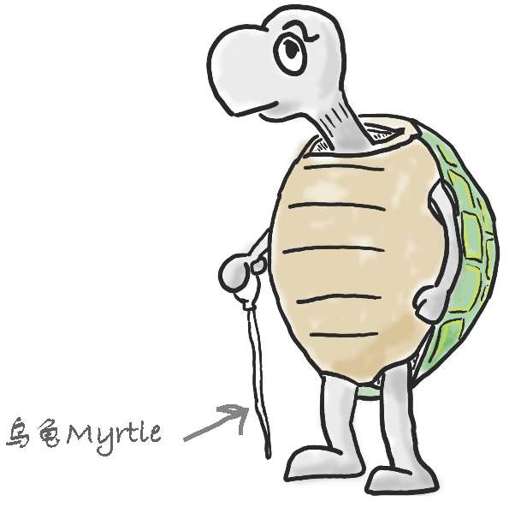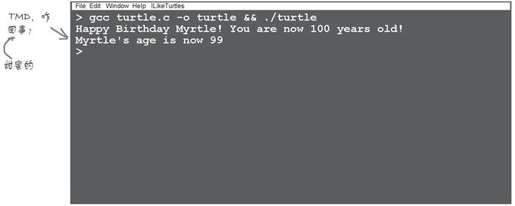如何更新结构
结构其实就是把一组绑在一起的变量当成一条数据处理。你已经学会了创建结构对象,并使用“点表示法”访问结构的值,那么怎样修改结构中已经存在的某个值呢?可以像修改变量那样修改字段:

既然如此,你应该能分析出下面这段代码做了什么。
#include <stdio.h>typedef struct {const char *name;const char *species;int age;} turtle;void happy_birthday(turtle t){t.age = t.age + 1;printf("Happy Birthday %s! You are now %i years old!\n", t.name, t.age);}int main(){turtle myrtle = {"Myrtle", "Leatherback sea turtle", 99};happy_birthday(myrtle);printf("%s's age is now %i\n", myrtle.name, myrtle.age);return 0;}
但奇怪的事情发生了……

 试驾
试驾
你编译并运行了代码,结果如下。

奇怪的事情发生了。
这段代码创建了一个新的结构,然后把它传给了一个函数,按理说,函数会将结构中某个字段的值递增1,但程序却……。
你知道age字段在happy_birthday()函数中更新了,因为printf()函数显示了递增以后age的值,但奇怪的是,虽然happy_birthday()更新了age,但程序返回main()函数以后,age又变回了原来的值。
脑力风暴
代码的行为十分诡异,但你已经掌握了足够多的信息,应该能推测到底发生了什么,是吧?
